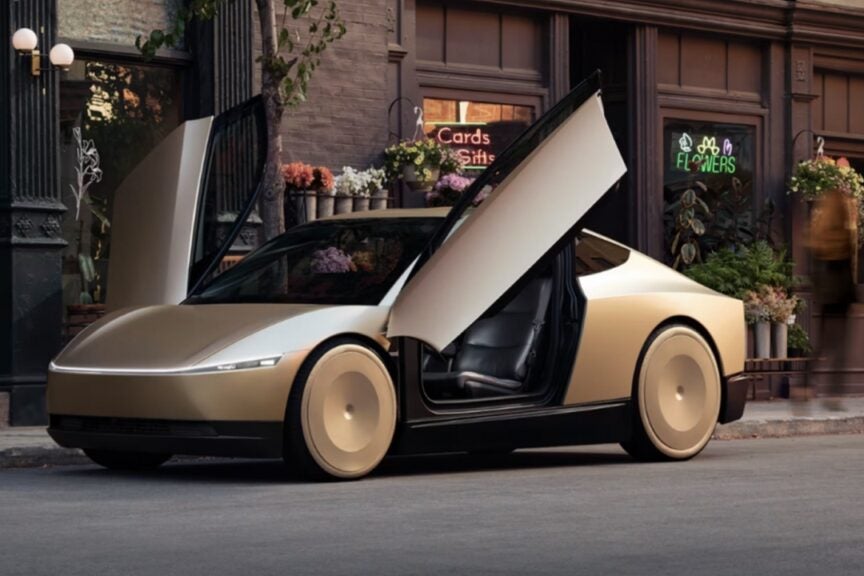Uber’s CEO Teases Groundbreaking Partnership with Tesla for Future Robotaxis
In an exciting development that has captured the attention of the tech and transportation industries alike, Uber’s CEO recently hinted at a potential partnership with Tesla aimed at developing a fleet of robotaxis. This announcement comes amidst a rapidly evolving landscape in urban transportation, where the demand for autonomous vehicles is skyrocketing. The prospect of Uber and Tesla joining forces could not only transform their business models but also redefine how we think about mobility in cities.
Understanding the Implications of the Partnership
The idea of a collaboration between Uber and Tesla is not just a business strategy; it represents a significant shift in how companies are approaching the future of transportation. As urban areas become more congested and the push for sustainable solutions grows stronger, the introduction of robotaxi services could offer a viable alternative to traditional car ownership and ride-hailing models. Here’s what this partnership could mean:
- Enhanced Efficiency: By integrating Tesla’s advanced autonomous vehicle technology with Uber’s extensive ride-hailing platform, the duo could create a seamless experience for users. This would likely lead to reduced wait times and improved service reliability.
- Sustainable Mobility: Both companies have expressed commitments to sustainability. A fleet of electric robotaxis could significantly cut down on emissions, aligning with global efforts to combat climate change.
- Market Competition: As competition heats up in the autonomous vehicle sector, a partnership between Uber and Tesla could set a new benchmark, pushing other companies to innovate to keep pace.
What Are Robotaxis?
Robotaxis, or autonomous taxis, are vehicles that can operate without human intervention, relying on sophisticated sensors and AI to navigate urban environments. The concept has gained traction due to advancements in technology and increasing investments in self-driving capabilities. Here’s a closer look at what makes robotaxis an attractive option for urban transportation:
- Cost-Effective: With no drivers to pay, operational costs can be significantly reduced, making rides more affordable for consumers.
- Increased Safety: Autonomous vehicles are designed to minimize human error, which is a leading cause of traffic accidents.
- Convenience: Users can summon a robotaxi via a smartphone app, providing a hassle-free transportation option for urban dwellers.
The Current State of Autonomous Vehicle Technology
As of now, both Uber and Tesla are at different stages in their autonomous vehicle journeys. Tesla has been at the forefront of self-driving technology with its Full Self-Driving (FSD) software, which is already in use in its vehicles. Uber, on the other hand, has been developing its autonomous driving technology through its Advanced Technologies Group, although it faced challenges and eventually scaled back its efforts in the space.
This potential partnership could thus leverage Tesla’s existing technology and Uber’s vast data from millions of rides to accelerate the development and deployment of robotaxis. Such collaboration could help Uber overcome the hurdles it faced previously, while Tesla could benefit from Uber’s extensive market reach.
Potential Challenges of the Partnership
While the prospect of a partnership between Uber and Tesla is thrilling, it does come with its challenges:
- Regulatory Hurdles: Autonomous vehicles are subject to stringent regulations that vary by region. Navigating this landscape will be crucial for the successful rollout of robotaxis.
- Public Acceptance: Gaining the trust of consumers is paramount. Many people are still hesitant about riding in autonomous vehicles, and addressing their concerns will be essential.
- Technological Integration: Merging Uber’s software systems with Tesla’s hardware could present technical challenges that require significant resources and expertise.
Broader Implications for the Transportation Industry
The potential collaboration between Uber and Tesla could have far-reaching implications beyond their individual businesses. It might serve as a catalyst for other companies to pursue similar partnerships or to accelerate their own autonomous vehicle initiatives. Here are a few broader trends to consider:
- Increased Investment: Success in this partnership could attract more investments into the autonomous vehicle sector, fueling innovation and development.
- Urban Infrastructure Changes: As robotaxis become more prevalent, cities may need to adapt their infrastructure to accommodate autonomous vehicles, potentially leading to smarter urban planning.
- Job Market Transformations: The rise of robotaxis could lead to significant shifts in the job market, particularly for driving-related occupations.
Conclusion: A New Era for Urban Mobility
In summary, Uber’s CEO’s hints at a groundbreaking partnership with Tesla for future robotaxis could mark the dawn of a new era in urban mobility. As these two titans of the tech industry potentially join forces, the implications for transportation, sustainability, and technology are profound. While challenges remain, the collaboration holds the promise of making urban transportation more efficient, sustainable, and accessible.
As the world watches closely, one thing is certain: the future of urban transportation is evolving, and the partnership between Uber and Tesla could very well be at the forefront of this revolution.
See more Future Tech Daily

